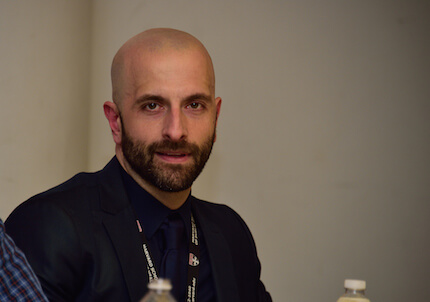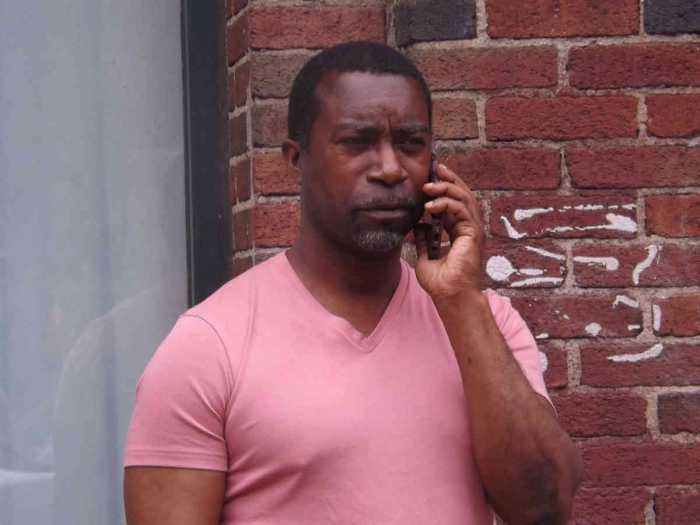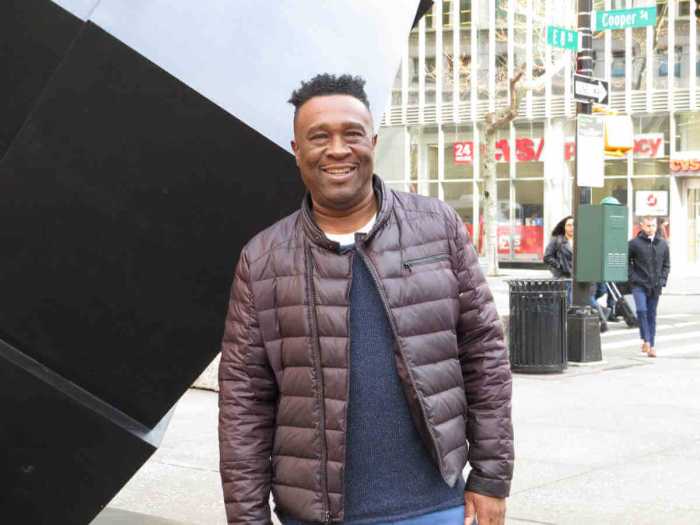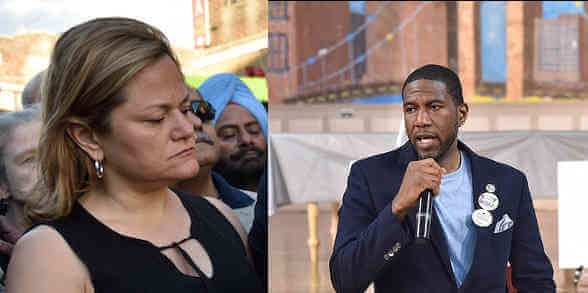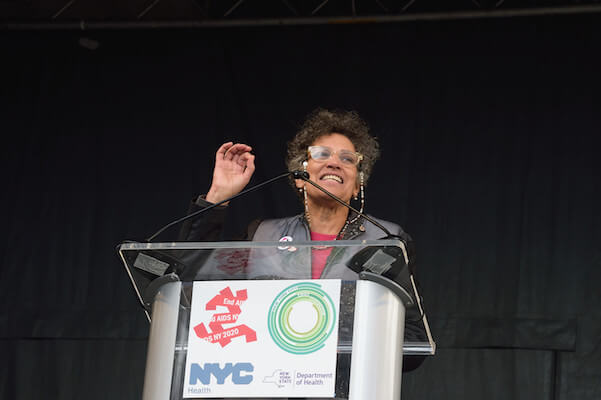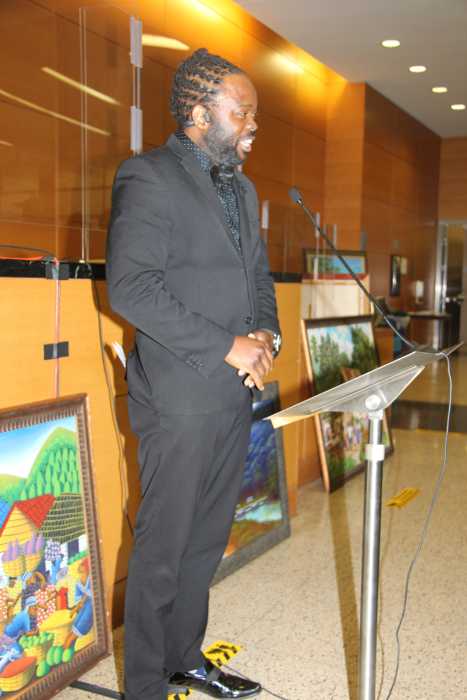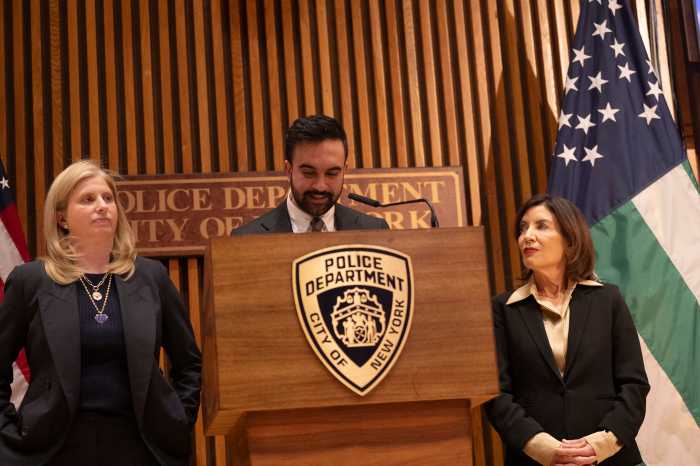BY ANDY HUMM | More and more sexually active gay men have gone on Truvada or PrEP, the pre-exposure prophylaxis drug, to prevent getting HIV. But for those not on the drug who experience exposure to HIV, there has long been the option of initiating a 28-day course of the drug in combination with others –– post-exposure prophylaxis or PEP. That treatment must be started within 24 to 72 hours of a possible exposure, such as having a condom break during anal intercourse. Access to PEP and PrEP is fast becoming easier through new city and foundation funding, but activists are calling for more, saying it is needed if they are to reach their goal of ending AIDS in New York by 2020.
Dr. Demetre Daskalakis — who pioneered getting nPEP (non-occupational post-exposure prophylaxis, for people other than medical professionals exposed to HIV in their work) into the hands of gay men who needed it by letting them call his cell phone — is now the city’s assistant health commissioner in charge of the Bureau of HIV/ AIDS Prevention and Control. Mount Sinai Hospital, where Daskalakis did much of his groundbreaking work, re-launched 24-hour access to nPEP citywide courtesy of funding from the Elton John Foundation. You can call 212-604-1701 to obtain emergency access to a three-day supply of the treatment until you can be connected to providers able to guide you through the 28-day regimen. This emergency access is available whether you are insured or uninsured.
Mount Sinai also has a program for PrEP for the uninsured and underinsured. More on the hospital’s HIV/ AIDS services can be found at mountsinaihealth.org/patient-care/infectious-diseases.
Advocates, health officials say those at risk know too little of post-exposure regimen and why it should be PrEP gateway
Explaining why PEP, available so much longer than PrEP has been, has gotten so little attention, Daskalakis said that the National Institute of Allergy and Infectious Diseases’ veteran director “Tony Fauci calls PEP ‘PrEP’s ugly step-sister.’ It’s not as sexy. People forget about it.”
According to Daskalakis, “PEP is a gateway to PrEP.” His strategy is to get people who access PEP to get onto PrEP to address their “ongoing risk for HIV.” He cited a study out of Amsterdam that found that gay men were successful in preventing a suspected exposure by using PEP but then went on to get HIV at rates higher than the rate for all men who have sex with men. The city’s Department of Health and Mental Hygiene will launch a new social marketing campaign on World AIDS Day, December 1, that will “highlight PrEP.”
“We need to use the energy around PrEP to help people learn about PEP,” he said.
While PEP is routinely taken by doctors and nurses who get needle sticks in hospitals that might infect them, individuals who are exposed to the virus in non-occupational settings either through sex or needles often face barriers to getting hold of PEP, starting with their lack of awareness about it and how it can prevent HIV infection. Also, many medical settings –– from doctors’ offices to emergency rooms –– are not fully prepared to offer quick access to the drug, which must be initiated within three days of exposure to be effective.
Jeremiah Johnson, the HIV prevention research and policy coordinator at the Treatment Action Group (TAG), said, “Ideally we’re giving people as many options as possible before they are exposed. The best thing we can do is educate people early about HIV, give them access to PrEP and condoms and clean needles, but if all else fails that person needs to be able to go to the ER or their doctor’s office and get blister packs of first doses for PEP. I’m a fan of making this as easy as possible at community health clinics and pharmacies outside normal business hours.”
James Krellenstein, a founding member of the Prevention of HIV Working Group of ACT UP, said that nPEP is “disastrously unavailable” at present, but he is “confident” that Daskalakis can make it available as it should be through what are being called PEP Centers for Excellence in every borough.
“It is disturbing that PEP has been readily available to health care workers for nearly 30 years, but gay men and trans women, who have been most impacted by HIV in the United States, are only now just getting a sustainable PEP system,” Krellenstein said.
In a follow-up email, he added, “PEP needs to be promoted more heavily, but PEP is not a substitute for PrEP. PEP patients are excellent candidates for PrEP once they finish their 28 day-long PEP regimen. We know from the Amsterdam study that gay men who received PEP (and were not linked to PrEP) were four times more likely to become HIV-positive than gay men who did not receive PEP, reflecting ongoing risk behavior.”
Krellenstein, 24, said he used PEP once in 2011, but now is on PrEP, the effectiveness of which is “highly supported by the data” –– with less conclusive data on PEP.
“I’m in a sero-discordant relationship with my HIV-positive boyfriend, who is also an activist,” he said. “I’m on PrEP, he’s on treatment and undetectable. I’m negative. We don’t need to use condoms. It is much safer for me to get fucked by someone with HIV who is undetectable than having sex with a person who thinks he’s negative. PrEP gives power to the individual.”
Johnson, 33, said, “I’m HIV-positive since 25. If PrEP had been available when I was 19, I wouldn’t be HIV-positive. For me, condoms were never going to work as a long-term strategy.”
He added, “PrEP has launched a whole new wave of HIV prevention advocacy. However, it’s essential that we continue to look at comprehensive prevention. We need to address other issues like education, PEP, and improving health care access.”
Charles King, the president of Housing Works, an AIDS services group, said, “The City Council has funded a very extensive new PrEP initiative for $3 million.” The PEP Centers for Excellence, however, are not yet included in the new funding — though a lot of new funding is pending in the city’s November budget modification that is being negotiated now (see Duncan Osborne’s “Broader City HIV Services Eligibility May Be on Deck” in the last issue of Gay City News).
King said that the End AIDS NY 2020 Community Coalition, of which Housing Works is a part, has “had positive conversations” about the spending increases being considered and is “optimistic about new initiatives.” The group wrote Mayor Bill de Blasio on October 21 calling for almost $8 million in new prevention funding, $12.3 million for care, $6 million for STD clinic services, $2 million for public education and social marketing, and $54.5 million for housing and living well.
“We continue to press for HASA for All at the city and state,” King said of the effort to open the support and entitlement services of the city’s HIV/ AIDS Services Administration to all HIV-positive city residents, not just those with an AIDS diagnosis. “We’ve asked Governor Cuomo to add additional $20 million in non-Medicaid spending and $100 million in housing funds. Housing every person living with HIV in New York State would cost $100 to 120 million.”
For more information about access to PEP nationwide, Krellenstein recommends going to pepnow.org. Housing Works’ World AIDS Day Rally, co-sponsored by scores of allies in the HIV/ AIDS community, is set for December 1 at the Apollo Theater from 11 am to 1 pm at 253 West 125th Street. It is free and open to the public. For more information visit housingworks.org/newsletter/update/lang/_ht.

